.
Hisari-toge 尺里峠 – Nishihirabatake Park 西平畑公園
Distance: 14.6 km
Elevation change: 711 metres
Highest point: 801 metres
Start: Takamatsu-iriguchi Bus Stop
Finish: Shin-Matsuda Station (Odakyu Odawara Line)
Difficulty: ▅▅▅▅▅▅▅▅▅▅ ❸
Map: Yama to Kogen Chizu 山と高原地図 [No.31 丹沢 TANZAWA]
GPX TrackKML TrackGSI MAPPDF Topo Map
A Scenic Trail with Cherry Blossoms and Fuji Views
Takamatsuyama is a relatively low-lying mountain located in the southern part of the Tanzawa Mountains, straddling Matsuda Town and Yamakita Town in Kanagawa Prefecture. Its gentle slopes make it easy to climb, making it a popular and accessible hiking course. While it is less well known than its neighbour, Mt. Ono, don’t let that put you off – the wide-open view from the summit is arguably even better. A great time to visit is from mid-February to early March, coinciding with the blooming of the Kawazu cherry blossoms at Nishihirabatake Park at the end of the hike.
Getting to the trailhead requires taking the Odakyu Odawara Line to Shin-Matsuda Station 新松田駅, about one hour from Noborito Station. Exit the station and head to bus stop 1, located to the left of the ticket gate. From here, board the bus bound for Nishitanzawa or Yamakita Station and get off at Takamatsu-iriguchi Bus Stop 高松山入口 (10 minutes, 330 yen). The first arriving train from Tokyo allowed for a smooth transfer, with only a 10-minute wait before catching the 6:55 am bus. While it is possible to start from Yamakita Station, this adds an extra 25 minutes of roadside hiking.
Takamatsuyama can be seen from the front of the bus stop. Although it is a low mountain with an elevation of about 800 metres, the starting point is just 90 metres above sea level. Just before passing under the expressway, turn left and follow the river, then take a minor road through a series of switchbacks. Due to the construction of the new Tomei Expressway, some makeshift scaffolding has been erected. However, ample signage guides you to the proper trailhead, which takes around 30 minutes to reach.
The trail starts off gently as you pass by a transmission tower, where the vegetation transitions to plantation forest. Along the trail, there are several Jizo statues, including one of historical significance at Birido ビリ堂, which was apparently placed along the route in 1813. Not long after, a long series of steps leads to the upper ridgeline, followed by a short walk to the summit. At a steady pace, it takes around two hours to reach Mt. Takamatsu 高松山 (801 m) from the bus stop. Since most of the trail remains in the forest, Mt. Fuji stays hidden until you reach the top.
The summit is a spacious, grassy area with a great view. Aside from Fujisan, which should have far more snow for this time of year, Myojingatake lies to the left, while the glistening Sagami Bay stretches out with the Izu Islands of Niijima and Toshima clearly visible in the distance. Given the early start, I wasn’t surprised to find myself alone at the summit. From Takamatsuyama, you can take either the steep Otoko-zaka 男坂 (male slope) trail or an easier path from the back. In any case, the trail soon becomes more gradual as it progresses. Before reaching Hisari-toge 尺里峠, you pass one of two Fujimi-dai, or Fujisan lookouts, dotted along the way.
Hisari-toge meets a four-way intersection filled with a barrage of handwritten signs. There are so many that it’s difficult to know which way to go – not just here but throughout the route back to the station. The correct direction is towards Saimyojishi Shiseki Park 最明寺史跡公園入口. The theme of encountering multiple junctions, combined with long and difficult-to-read place names, meant that without my GPS to guide me, it would have been very difficult to find my way. The trail to Saimyojishi Shiseki Park, the site of a former temple, alternates between paved and unpaved roads, as well as mountain paths. Along the way, I also saw several seemingly abandoned trucks by the roadside.
Saimyojishi Shiseki Park is a serene spot to stop for lunch. When you’re ready to continue, head towards Nishihirabatake Park 西平畑公園. The GPS map indicates a mountain trail, but it appears to have fallen into disrepair, leaving the only option to follow the paved road, which passes through two wildlife prevention gates. As you near Nishihirabatake Park, a panoramic view of Sagami Bay opens up in front of you – it’s a magnificent sight. If you’re hiking in late February, you can enjoy the early-blooming Kawazu-zakura cherry blossoms interspersed with Nanohana (rapeseed). Less thrilling are the throngs of tourists who converge on the park at this time of year. From there, it’s just a 10-minute walk back to Shin-Matsuda Station.
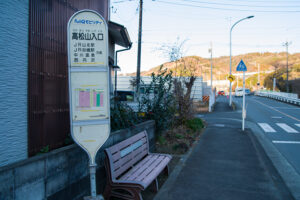
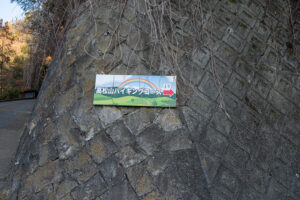
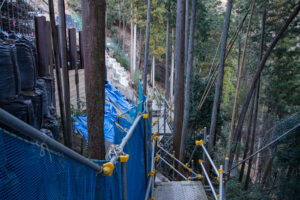
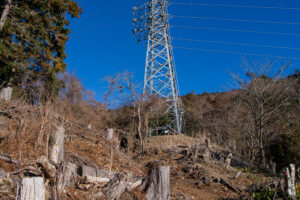
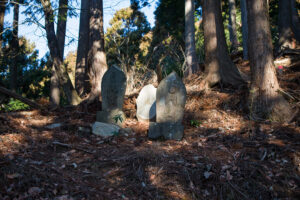
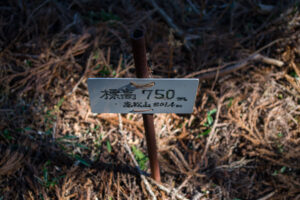
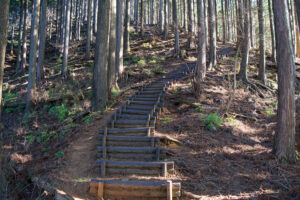
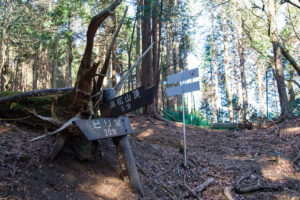
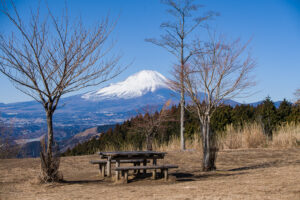
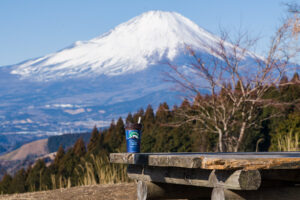
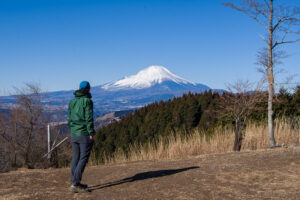
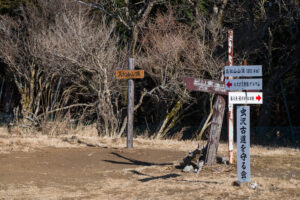
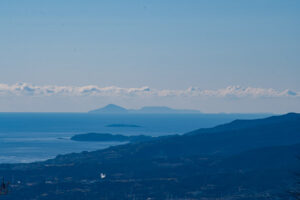
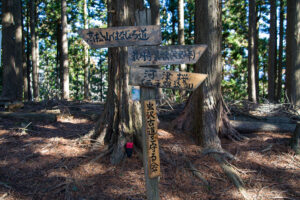
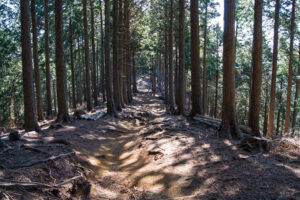
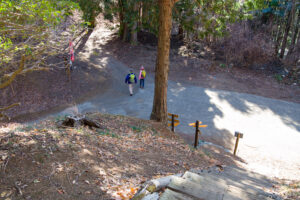
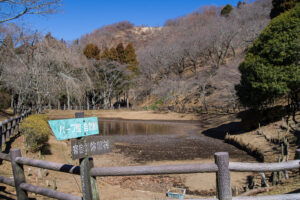
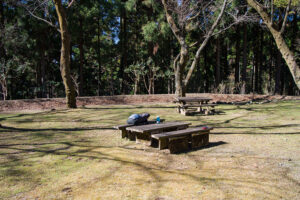
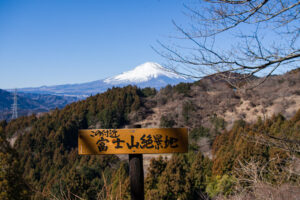
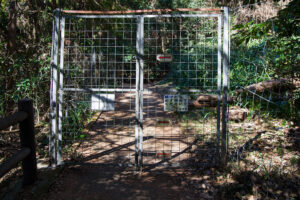
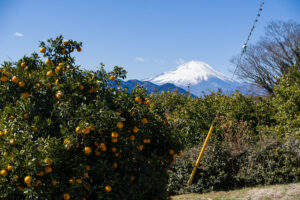
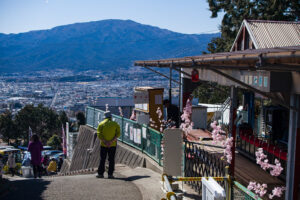
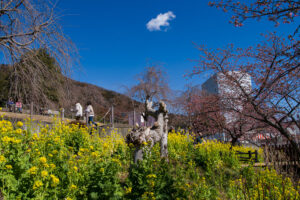
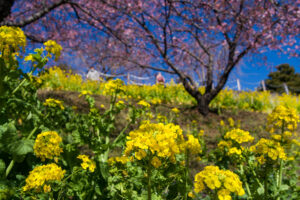
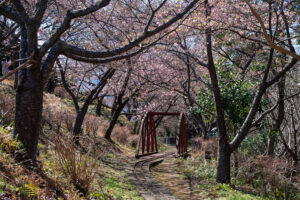
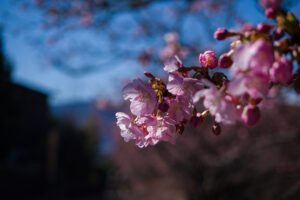
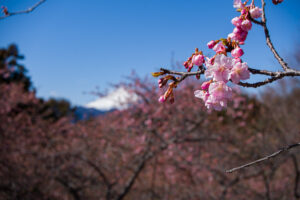
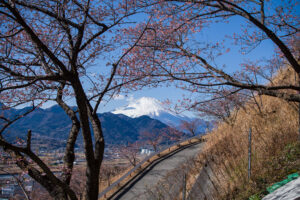
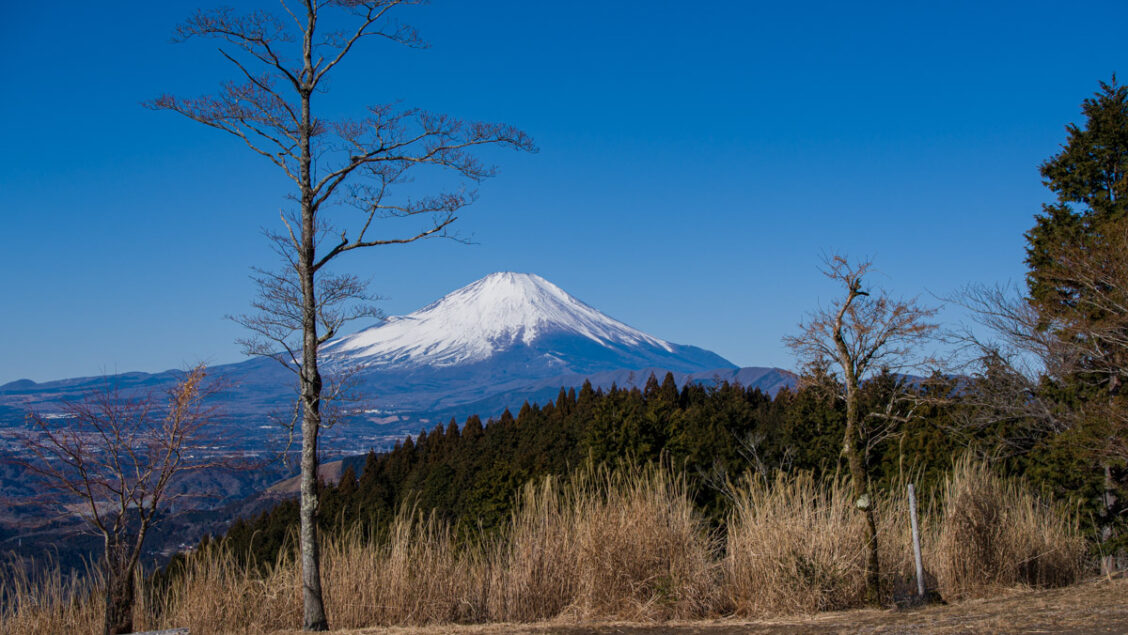
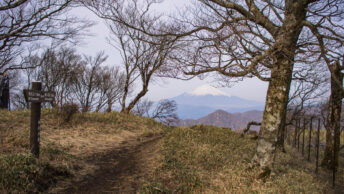
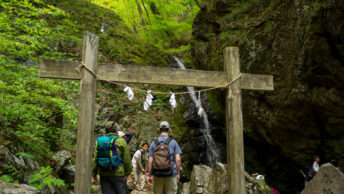
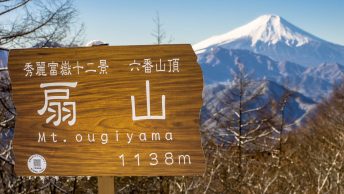
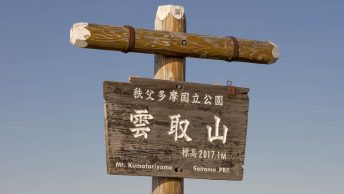
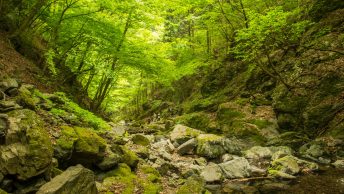
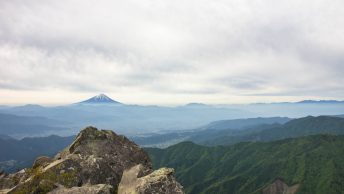
Thanks for the new hike. I am looking for hikes in this distance range.
Do you ever take the highway bus this direction? Google maps suggest the bus is faster, but I’ve never used them and wonder if traffic makes the time longer.
No worries, Mike. No, I haven’t, and I would be surprised if it could beat the Odakyu Rapid-Exp. in weekend traffic, which can make the trip in around 1 hour and 20 minutes from Shinjuku.
Ok, thanks. Google maps says the bus takes 1 hour from Shinjuku, but I doubt that includes traffic, so I’ll probally stick with the train.
I did this hike today (4/5/2025). I live on the east side of Tokyo so can’t take the first train like you, still got to the station around 8:30 using the Romance Car and could get on the bus.
There was a beautiful view of Mt Fuji from the bus so I had high hopes for a scenic hike
I dashed from the bus stop to get ahead of a couple (senior) groups and I had the trail to myself for most of the day.
The first 250m+ elevation gain was mainly stairs through the highway construction site.
Near the summit, the trail was washed out in places, so it was a little challenge to find the right way up.
At the summit Mt Fuji was hidden by clouds so that was too bad. I glimpsed it again on the way down, but best view ended up the one from the bus.
A lot of the descent is on roads so it was a little tough on the knees and feet.
The signage on the descent is sketchy and with multiple routes down it’s hard to know the right way. Even with a map and GPS route I made a wrong turn (but still made it down alright).
The blossoms were beautiful throughout the hike and it was a great day for a walk (but would have liked to see Mt Fuji from the summit 🗻).
Thanks for the comment, Mike. Unfortunately, that’s the nature of the beast—Fuji-san is quite fickle. I’ve often experienced the same thing: arriving too late to the trailhead or summit to catch a good view. Overall, it sounds like the cherry blossoms helped make up for it.